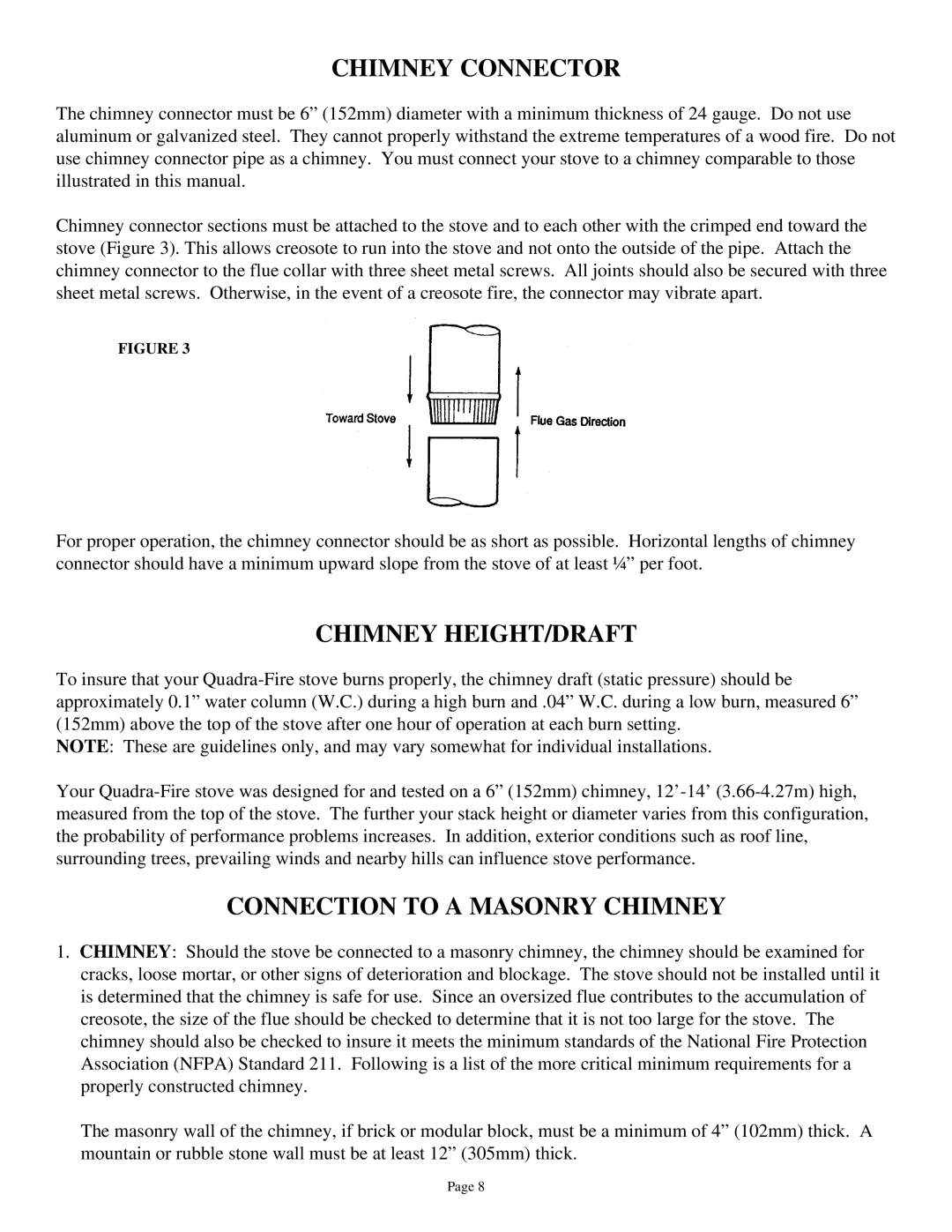
CHIMNEY CONNECTOR
The chimney connector must be 6” (152mm) diameter with a minimum thickness of 24 gauge. Do not use aluminum or galvanized steel. They cannot properly withstand the extreme temperatures of a wood fire. Do not use chimney connector pipe as a chimney. You must connect your stove to a chimney comparable to those illustrated in this manual.
Chimney connector sections must be attached to the stove and to each other with the crimped end toward the stove (Figure 3). This allows creosote to run into the stove and not onto the outside of the pipe. Attach the chimney connector to the flue collar with three sheet metal screws. All joints should also be secured with three sheet metal screws. Otherwise, in the event of a creosote fire, the connector may vibrate apart.
FIGURE 3
For proper operation, the chimney connector should be as short as possible. Horizontal lengths of chimney connector should have a minimum upward slope from the stove of at least ¼” per foot.
CHIMNEY HEIGHT/DRAFT
To insure that your
NOTE: These are guidelines only, and may vary somewhat for individual installations.
Your
CONNECTION TO A MASONRY CHIMNEY
1.CHIMNEY: Should the stove be connected to a masonry chimney, the chimney should be examined for cracks, loose mortar, or other signs of deterioration and blockage. The stove should not be installed until it is determined that the chimney is safe for use. Since an oversized flue contributes to the accumulation of creosote, the size of the flue should be checked to determine that it is not too large for the stove. The chimney should also be checked to insure it meets the minimum standards of the National Fire Protection Association (NFPA) Standard 211. Following is a list of the more critical minimum requirements for a properly constructed chimney.
The masonry wall of the chimney, if brick or modular block, must be a minimum of 4” (102mm) thick. A mountain or rubble stone wall must be at least 12” (305mm) thick.
Page 8
